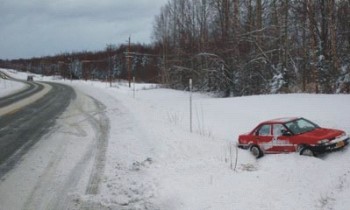
To win people over and get them to join your cause, it is best to not clobber them over the head as the beginning of this article for the top five measures for industrial energy efficiency does. The first paragraph reads like a senator’s stump speech with selective facts that deliver a distorted message. To wit, “the United States ranks first in energy wastefulness among developed nations”. Presumably, China is not a developed nation. Moreover, is waste measured in energy consumption, waste, or either of those per unit of economic output?
The next statement is that industry is responsible for 30% of greenhouse gas emissions, [paraphrasing] therefore, industry is bad. Bad. Bad. Bad. More efficient buildings would reduce our dependence on foreign oil, it says. That one is good for a laugh because less than 1% of electricity produced comes from petrol, which is overwhelmingly used for transportation and also as a feedstock for some industries.
Moving on. I agree there is massive savings potential with supporting “utilities” within an industrial plant. These include compressed air, fans, pumps, blowers, cooling and chilled water systems, steam, and refrigeration. He is correct again that staff is stretched membrane thin.
I disagree that aging equipment is a bane to industrial energy efficiency. Poor system design and control sequences waste an order of magnitude more energy than the incremental disadvantage old equipment has over newer, more modern equipment. For example, air compressors produce about 22 standard cubic feet of compressed air per 100 brake horsepower at full load. (Is this a dumb metric? Yes. But I didn’t develop it.) This hasn’t changed greatly for decades. Similarly, industrial boilers operate at 80-85% efficiency. No change for decades. Fans and pumps operate at around 70% efficiency.
Technology has improved to greatly improve part load efficiencies. The key to industrial energy efficiency and everything else is efficiency at typical operating conditions, which is not full capacity. Components like variable frequency drives have assisted this greatly. However, they are often controlled far less effectively than one would like to see.
I am in complete agreement that the three needs of many plant managers include a prioritized list of cost effective measures (knowledge), a business case for it (risk aversion), and source of dough (capital). A vast majority of energy efficiency portfolios throughout the country lack effective delivery of developed measures for customer decision making AND provide assistance between the prioritized list development and implementation. This is where many projects go in the ditch.
Portfolios will need to move in the direction of knowledge and information based programs in order to hit aggressive energy saving targets, and this is already in gear for a number of utilities – and I’m lovin it, not to be confused with McDonald’s, although I would throw in a pitch for the cheap and crappy McDonald’s hamburger, which I like very much. Michaels rolled out such a program several years ago. Twelve month savings data are just beginning to pile in showing 15-40% savings and even greater in some cases. In some jurisdictions, the whole shebang is also known as “strategic energy management” (SEM) programs.
Strategic energy management programs can be great because they are comprehensive, facility wide, and not just changing out light bulbs and installing a new, but not systemically integrated, boiler or variable frequency driver here and there. It includes benchmarking, investigation, measurement development, planning, implementation assistance (also known as the “magic middle” or the ditch as noted above), and constant monitoring of performance metrics.
Now for the “top five” industrial energy efficiency measures from the above article.
- Reduce peak demand. The article states peak demand is “impossible to determine by looking at the utility bill.” Wha? Does he mean in real time? I don’t get it. Anyway, many times comprehensive energy efficiency implementation will bring down peak demand proportionally with energy savings. Note, I said comprehensive – which means rolling a bunch of measures together. The article also states demand charges often equal 30% of the dollars billed. Actually, it’s closer to 50% and sometimes even higher. Some electrical tariffs practically give energy away but charge like crazy for demand.
- Reduce weekend energy use. This is slightly more sophisticated than changing light bulbs. Turn stuff off at night and on the weekends. I got it already.
- Set stuff back at night. See number 2.
- Avoid startup spikes. Myth alert! Myth alert. “Startup spikes result when voltage jumps because multiple mechanical systems are turned on simultaneously.” Talk about going in the ditch! Inrush current when slamming things on causes voltage to droop. The myth is that inrush currents and power spikes increase demand charges. Not true. Demand is measured over 15 minute intervals – either sliding or discrete intervals depending on the utility. Therefore, a split second spike in power draw will have very little impact on demand or demand charges. It’s like throwing a little ice cube in a vat of hot oil. It may cause problems and I wouldn’t advise it if you know what’s good for you, but it isn’t going to noticeably affect the oil temperature.
- Save with compressed air. It is certainly true that compressed air systems can waste gobs of energy, but compressed air has been targeted by programs for a long time. However, there is still a lot that can be done, particularly with compressor sequencing for multiple-compressor plants – as discussed above for actual operational efficiency, not full load only. He does hit this one on the head near the end of the article.
I’ll have to generate my own top five at some point.






Michael (I presume), with respect to http://www.michaelsenergy.com/2013/03/industrial-energy-efficiency-stay-out-of-the-ditch/, when you write your top 5, we’ll be pleased to read them.